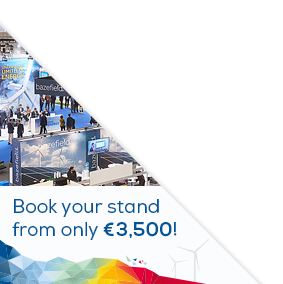Posters
Siblings:
ProceedingsProgrammeProceedingsSpeakersPostersContent PartnersElectrification StageMarkets TheatreR&I ActivitiesStudent DayProgramme Committee & abstracts reviewersPresenters dashboardCome meet the poster presenters to ask them questions and discuss their work
We would like to invite you to come and see the posters at our upcoming conference. The posters will showcase a diverse range of research topics and provide an opportunity for delegates to engage with the authors and learn more about their work. Whether you are a seasoned researcher or simply curious about the latest developments in your field, we believe that the posters will offer something of interest to everyone. So please, join us at the conference and take advantage of this opportunity to learn and engage with your peers in the academic community. We look forward to seeing you there!

PO133: Mapping of hybrid offshore wind and green hydrogen pilot projects
Jéssica Rayany Rodrigues Silva, Reseacher, Creation Research Group - UFRN
Abstract
Hydrogen (H2) is considered as a central pillar of the global energy transition, is recognized by international energy agencies as a disruptive technology, and more than 30 countries and regions have hydrogen strategies, indicating that cross-border hydrogen trade is set to grow considerably. To green hydrogen (GH2), of all renewable energies, offshore wind has the highest potential to improve the economics of green hydrogen projects due to cost-competitiveness and scalability. As it is a growing economic sector, pilot projects are in the development phase. This study aims to analyze the current scenario of technologies of GH2 projects from offshore wind power and map the main characteristics of the systems: Production, Transport and End Use. The research involved three phases: Theoretical research to map the value chain; Case studies, with data collection on GH2 hubs; and Inter-case analysis. Was study the projects: Poshydon and Emshaveen Port Hub, Netherlands; Gigastack, United Kingdom; Base One, Brazil. The results indicate: In the production stage, the main route of GH2 production is electrolysis, with a perspective of large-scale projects using PEM electrolysers; In stationary storage, gaseous forms are the most mentioned; For transport, short and medium distances will use gaseous H2 via pipelines or trucks, long distances, especially intercontinental, the modal used will be via ships, and the competitiveness of the use of ammonia is already pointed out; In end uses, beyond exportations, the sectors of chemical products, mobility, industrial uses and heat generation are the main ones cited. In conclusion, the practical knowledge from the pilot projects will contribute to the development of future projects, the cost of this technology and, as a consequence, the increase in the competitiveness of the GH2 market. In addition, the production of H2 in synergy with offshore wind on a large scale can be considered a medium-term reality.







